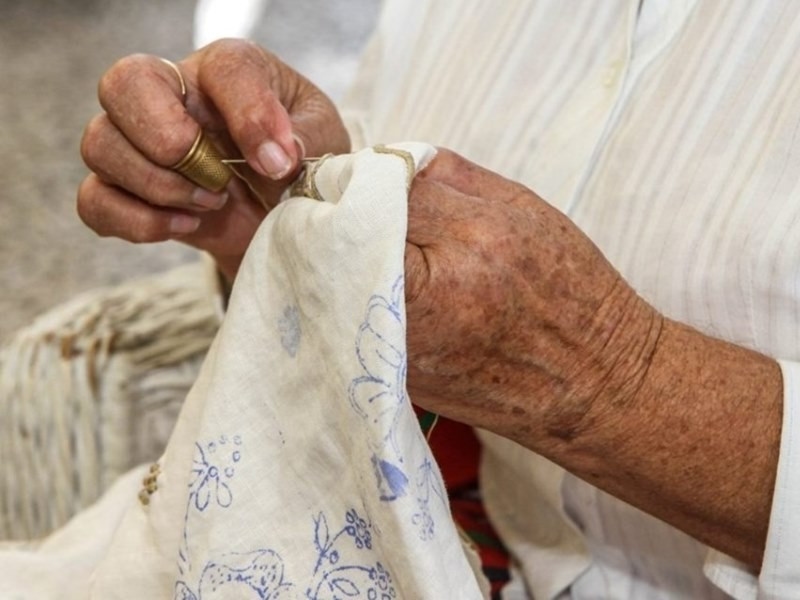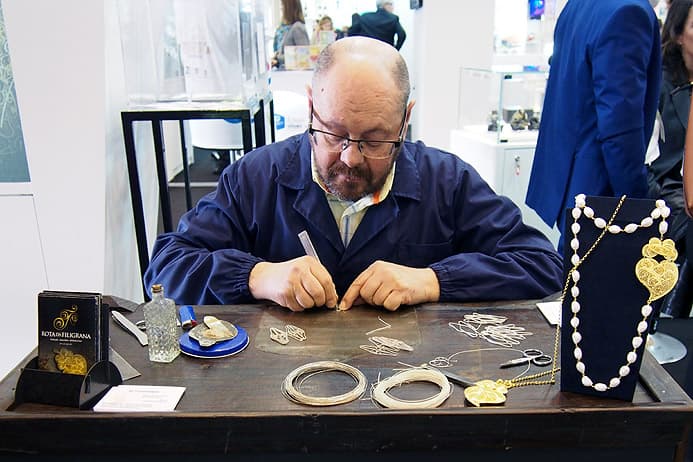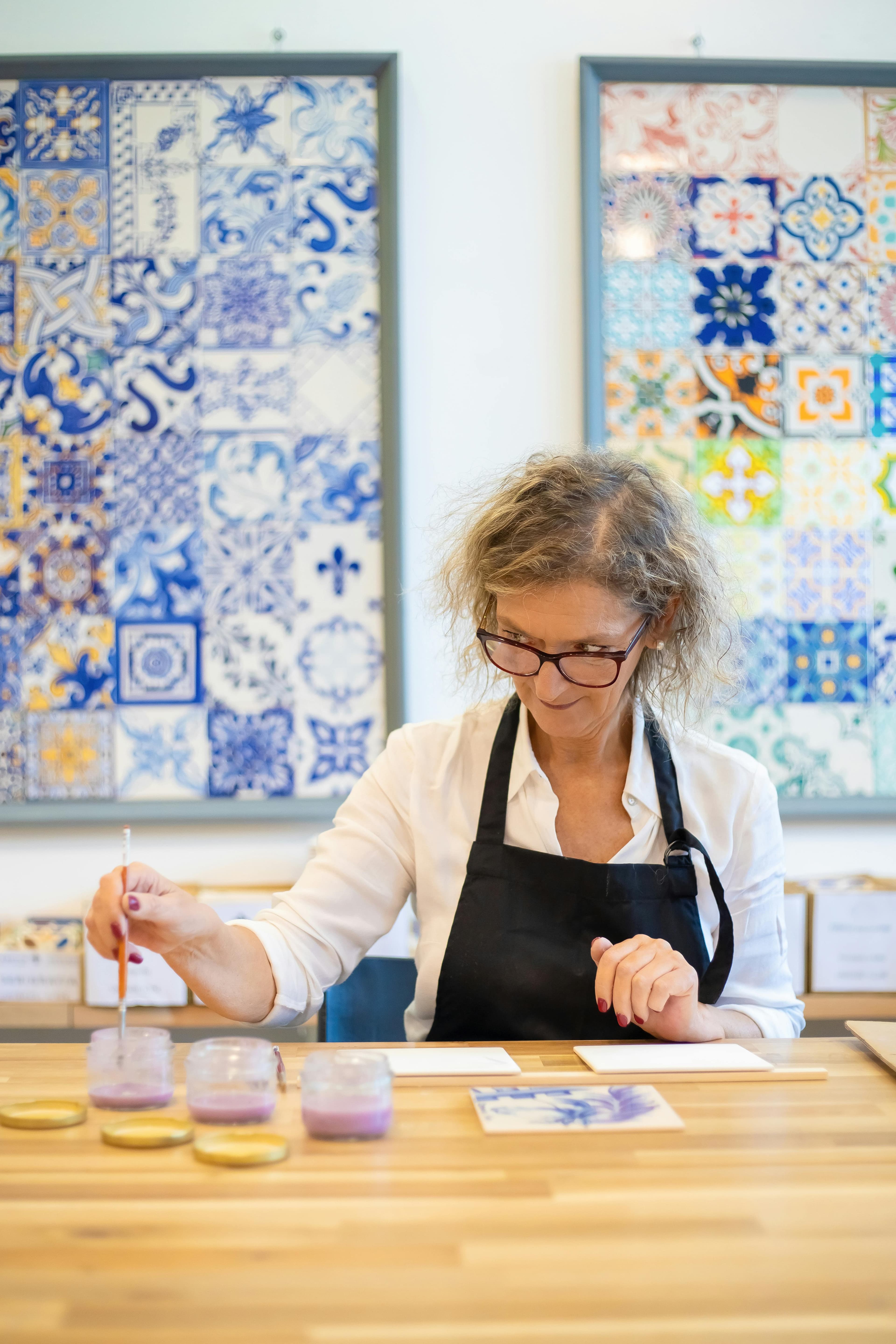
Portugal is full of artisanal traditions that reflect its rich cultural heritage and the skills passed down through generations. Among these treasures, two techniques stand out for their delicacy, beauty, and let’s be honest, their poetic charm: Madeira embroidery and Viana lace. These unique crafts are much more than simple decorative objects; they represent the soul of the regions that gave birth to them, the ingenuity of their artisans, and above all, that passion that withstands the test of time, keeping tradition alive in the modern world.
An Ancient and Prestigious Artisanal Heritage
Madeira embroidery dates back to the 19th century on the island that shares its name, also known as the “Island of Flowers.” Before long, these delicate designs had captured hearts everywhere, becoming symbols of refinement and prestige both in Portugal and abroad. The intricate patterns (often floral or geometric) reflect the influence of the island’s lush gardens and natural beauty, as if each stitch were a walk through Madeira’s landscape, as well as the skill of the women who created them. These embroideries were used to adorn clothing, bed linen and accessories, but also given as precious gifts for special occasions.
Viana lace (or renda de bilros) is a little older, dating back to the 17th century in the northern region of Viana do Castelo. It’s made using bobbins and a cushion to weave complex patterns, often inspired by nature or local religious traditions. Each piece requires hours (sometimes days!) of meticulous work and total concentration. It takes the patience of a saint, and a good dose of passion too! Like Madeira embroidery, Viana lace was originally used for ceremonial clothing, table linens and luxury accessories.
The Technique and Precision Behind the Beauty
Creating Madeira embroidery requires exceptional precision and a keen sense of design. Artisans use lightweight fabrics (usually cotton or linen) and fine, high-quality threads. Each stitch is made by hand, using techniques such as satin stitch, chain stitch or knot stitch. Every pattern is designed to create a harmonious and balanced effect, a true ballet of needles, and some pieces can contain hundreds of stitches per square centimetre! The result is always delicate, luminous and elegant, the kind of beauty that brings a touch of grace to any fabric.
As for Viana lace, the technique depends on mastering the bobbins — and infinite patience! The craftswomen (most often women) handle multiple bobbins at once, intertwining threads to create intricate designs. The motifs can depict flowers, religious symbols or traditional geometric forms. The lace is made entirely by hand (yes, without a single machine involved !) and every centimetre reflects the artisan’s skill and experience. The finished creations are often used as tablecloths, necklaces, clothing trims or decorative elements… tiny masterpieces that turn the everyday into art.
A Cultural and Identity Dimension
These two crafts go far beyond aesthetics: they are deeply rooted in the history and culture of their regions. Madeira embroidery is closely linked to the island’s daily life and identity, it reflects both European and colonial influences and has helped shape the island’s cultural heritage. Even today, each motif tells a story and carries a piece of Madeira’s soul.
Viana lace, on the other hand, symbolises perseverance, patience and meticulous attention to detail. It also reflects the importance of family traditions in the region; this know-how is often passed from mother to daughter, with that same pride and tenderness that keep traditions alive, ensuring these ancestral techniques are never lost.
The Evolution and Modernisation of the Craft
Though steeped in tradition, these crafts have evolved beautifully to stay relevant in the modern world. Madeira embroidery now appears in fashion collections, accessories, home décor and even international design collaborations (yes, embroidery is making a stylish comeback on the catwalks !)
Viana lace, too, has found its place in contemporary creations. Artisans experiment with new shapes, threads and patterns to craft unique pieces that captivate lovers of art and modern design. Many workshops even open their doors to visitors for demonstrations and hands-on sessions, a fun way to get tangled up in the threads and leave with a smile.
How to Discover These Crafts Today
Visiting Madeira or Viana do Castelo is a perfect opportunity to see these traditions up close. In the workshops and small shops, you can watch artisans at work, buy authentic pieces and even join introductory sessions to learn the basics of these crafts. And trust me, watching these skilful hands in action is nothing short of mesmerising! If you’re ever in the area, don’t miss the chance to step inside one of these charming ateliers.
A Living Heritage Worth Protecting
These crafts are precious not only for their beauty but also for the vital role they play in preserving Portugal’s cultural heritage. Local and regional initiatives are working to support artisans, share knowledge and promote these traditions internationally (and let’s be honest, the Portuguese have every reason to be proud !)
Madeira embroidery and Viana lace are recognised for their exceptional quality and are now protected as intangible cultural heritage. The importance of preserving them goes far beyond commerce: it’s about maintaining a connection to history, culture, and a touch of sweet nostalgia, safeguarding the identity of these regions. Every stitch, every knot, represents centuries of skill and dedication… a handmade legacy to cherish, admire and protect.
Share this article
Suggested articles

Meeting the Leather and Wood Artisans of Portugal
Portugal is a country where craftsmanship is far more than a profession: it is a true tradition, passed down from generation to generation ! Among its most emblematic skills, leather and woodwork stand out strongly.

Filigree Art, Portuguese Gold and Silver Jewellery
Portugal boasts a rich artisanal heritage, and among its treasures, filigree art shines for its finesse, delicacy, and timeless elegance ! Filigree is an ancestral jewellery technique that involves working gold or silver into extremely fine threads to create intricate patterns.

Traditional Pottery of Estremoz
The town of Estremoz, situated in the heart of Alentejo, is renowned for much more than its castles and striking white marble! It is home to an ancient craft: traditional pottery. This millennia-old art, passed down through generations, reflects the history, creativity, and expertise of local artisans.

Cork, a National Treasure
Cork is not just a material ; it is a true natural and cultural treasure of Portugal ! A symbol of sustainability, ingenuity, and refined craftsmanship, it lies at the heart of national identity and features in our homes in both traditional and modern forms (especially among the Portuguese).

Azulejos: the Art of Portuguese Ceramics Through the Centuries
In Portugal, you only need to look up to see azulejos. These glazed ceramic tiles decorate the façades of houses, churches, palaces, train stations, and even some metro stations. Their blue and white shine has become one of the country’s most recognizable symbols. But behind their beauty lies a long and rich history, shaped by cultural exchanges, technical innovations, and artistic evolution.


